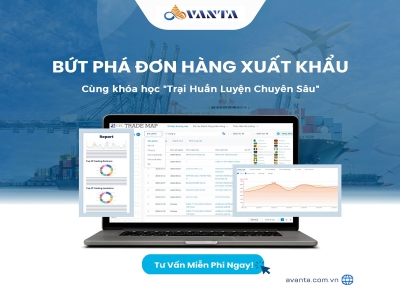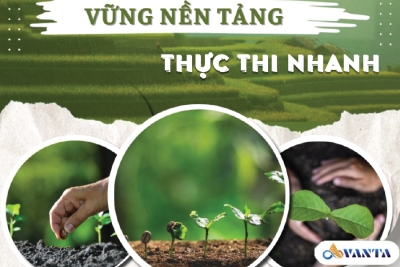THE CURRENT SITUATION OF VIETNAM'S AGRICULTURAL INDUSTRY
EXPLORING THE OVERALL PICTURE OF VIETNAM'S AGRICULTURAL INDUSTRY IN THE NEW ERA: A JOURNEY OF CHALLENGES AND PROMISES
Vietnam's agricultural industry has undergone significant changes since the economic reform in the 1980s. From a country heavily affected by food shortages, Vietnam has become one of the world's leading producers and exporters of various agricultural products, such as coffee, peanuts, and rice. This landscape represents not only the diversity and richness of the agricultural sector but also symbolizes the vitality and strength of Vietnam's agricultural economy.

1. Impressive highlights in Agriculture, Aquaculture and Fishery export
Vietnam's agricultural industry has successfully impressed the international community with remarkable achievements. Continuous efforts have helped the agricultural and aquatic export turnover surpass $50 billion in 2022, marking the beginning of a new era characterized by diversity and credibility in exports. Moreover, numerous new products have joined the billion-dollar export club. According to the Ministry of Agriculture and Rural Development, with the ongoing recovery, the export turnover of Vietnam's agricultural, forestry, and aquatic products in the fourth quarter of 2023 is expected to grow significantly, aiming to reach around $54-55 billion in 2023.
2. Shifting agricultural production
A strong shift in agricultural production is a crucial driving force. Reports from the Ministry of Agriculture and Rural Development indicate that consistent growth in sectors such as crop cultivation, animal husbandry, aquaculture, and forestry has contributed to a 3.33% increase in the value of agricultural production in 2022. This demonstrates the diversification and flexibility in production approaches.
3. Achieving record-breaking agricultural export
By the end of 2022, Vietnam's agricultural and aquatic sector had more than 11 commodity groups with export turnovers exceeding $1 billion. Notably, seafood exports exceeded $11 billion, and three new items joined the billion-dollar export club: tuna, animal feed, and fertilizers. With over 11 commodity groups surpassing the $1 billion export mark, the agricultural and aquatic sector not only provides stable income but also shines as a bright spot in the national economy. Surpassing the $11 billion mark in seafood exports demonstrates Vietnam's competitiveness and attractiveness in the international market.
4. Low levels of agricultural support
In Vietnam, agriculture is one of the largest sectors with a trade surplus and the highest value-added, yet support policies are relatively limited. According to statistics from the Organization for Economic Cooperation and Development (OECD), agricultural support in Vietnam currently accounts for only 7%, significantly lower than other countries like Japan and South Korea (55%-60%). Support mainly comes through agricultural promotion systems and the reduction of certain fees, limiting the ability to cope with market risks and technical challenges.
5. Constraints in the financial and credit system for agriculture
Credit for agricultural development only accounts for 24.6% of the total economic debt. Small and medium-sized agricultural enterprises face difficulties in participating in the value chains of large corporations and enterprises. Market risks and contract breaches often occur, creating fear and hindering investment in agriculture.
Vietnam's agriculture in 2023 is not just an industry but a revolutionary development, rising with a spirit of innovation and leaving a global mark! This journey not only provides stable income but also changes the perception of agriculture, transforming it from a traditional sector to a vital driving force for the comprehensive development of the country.
Sources: Vietnam Trade and Industry Review, VnEconomy
 VN
VN















